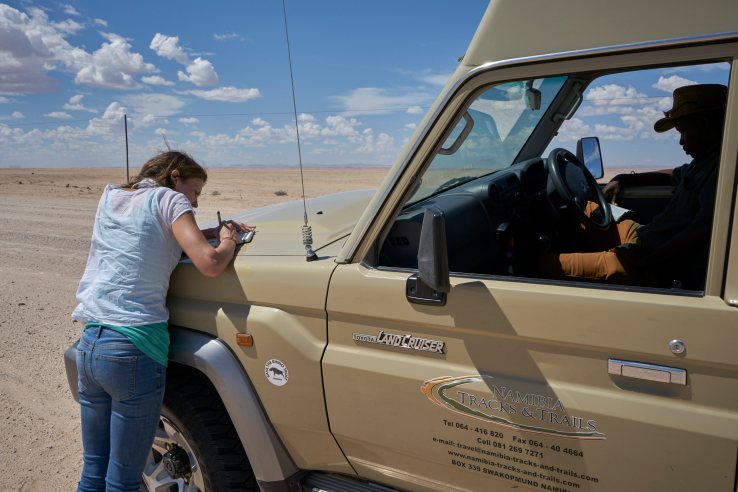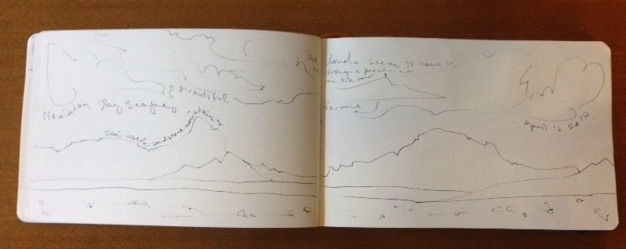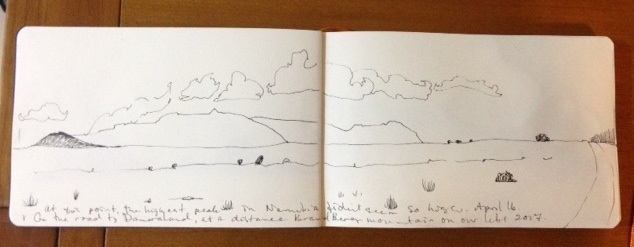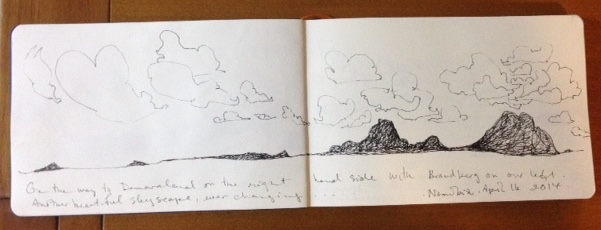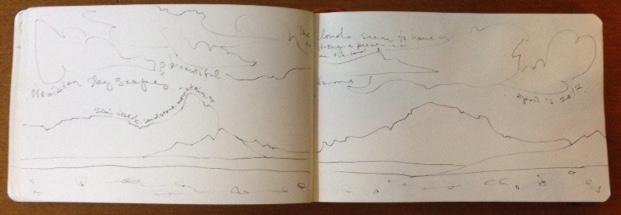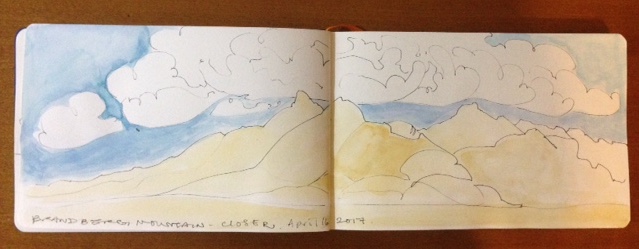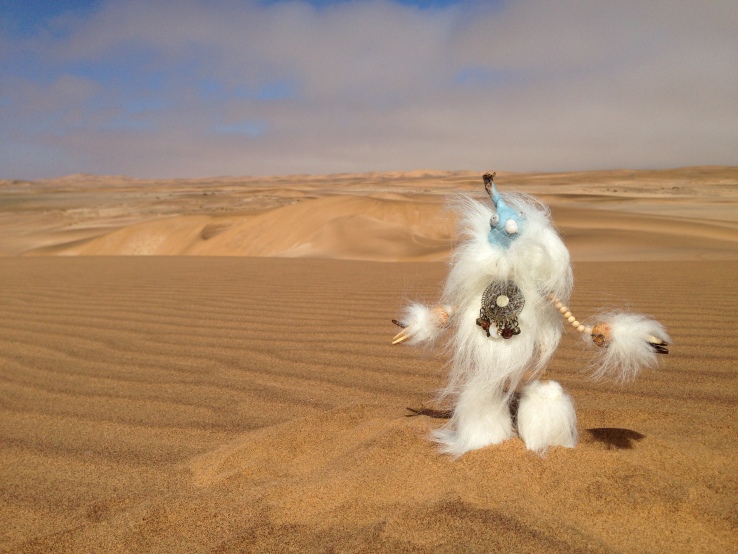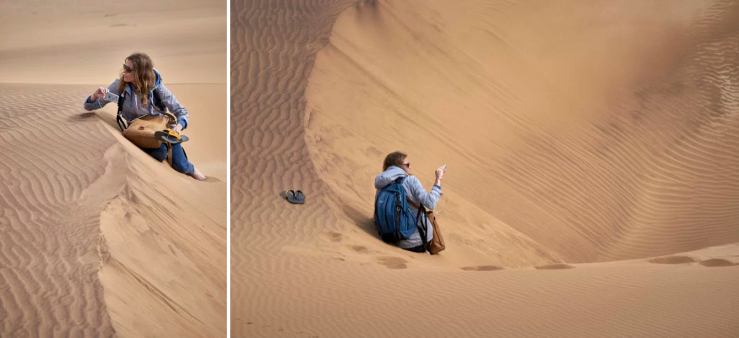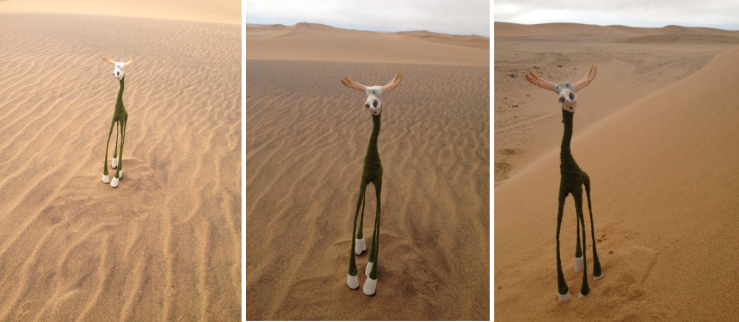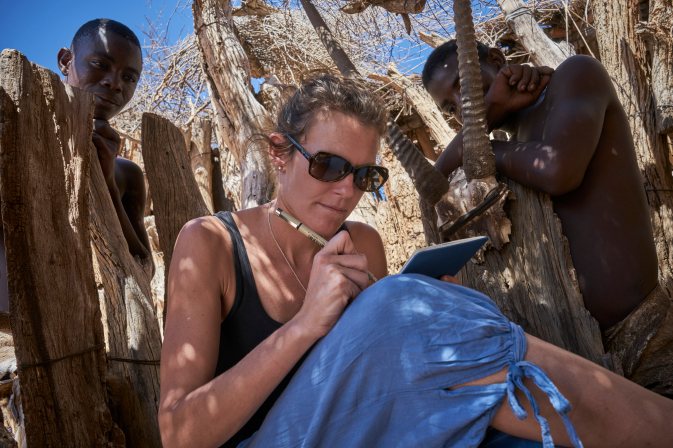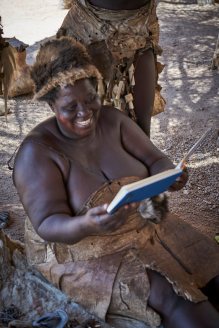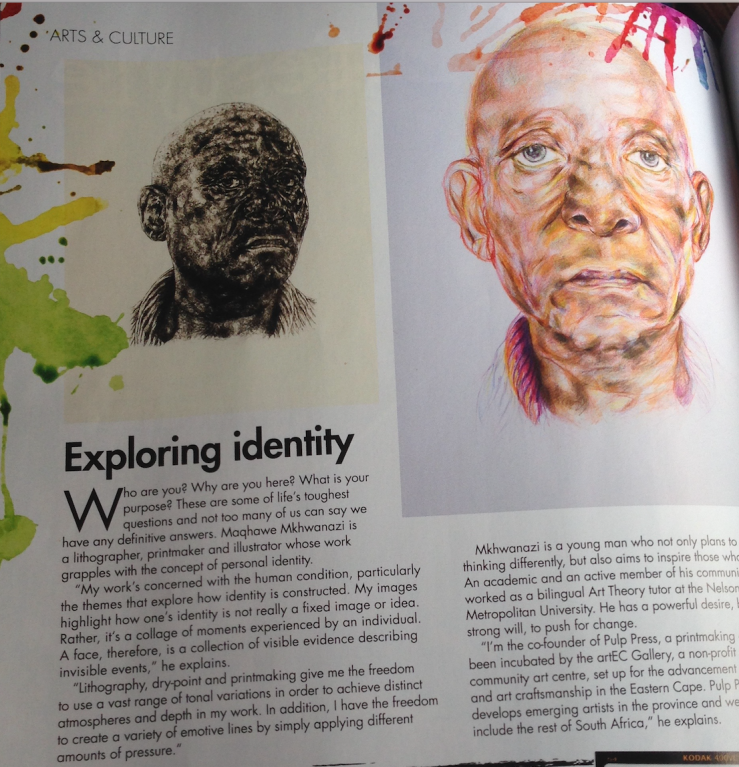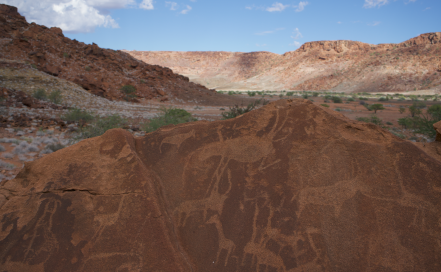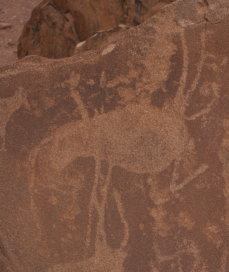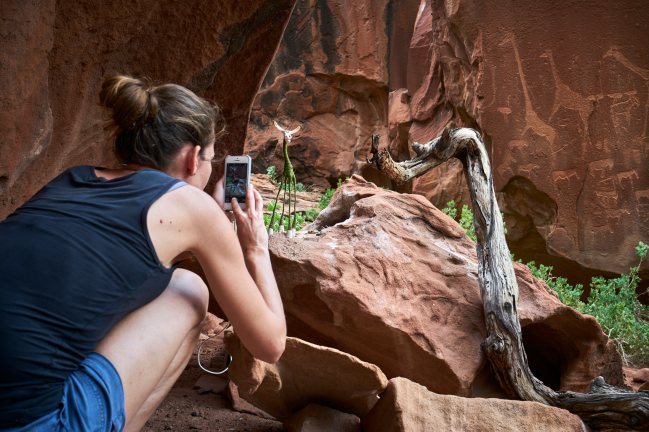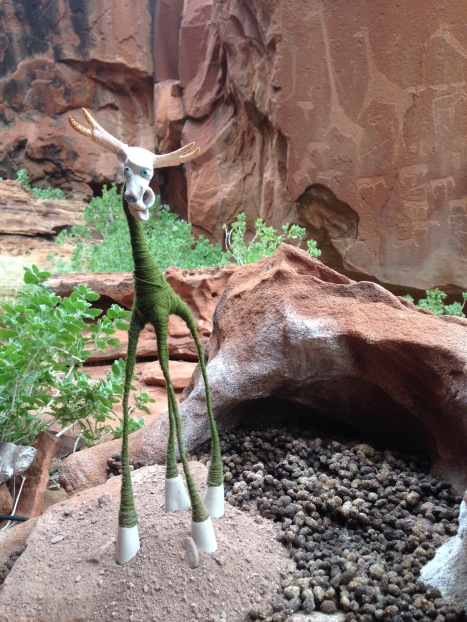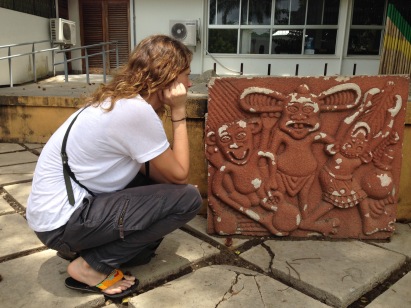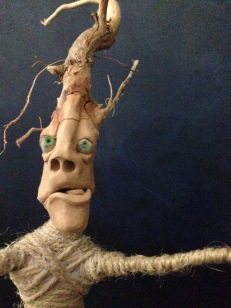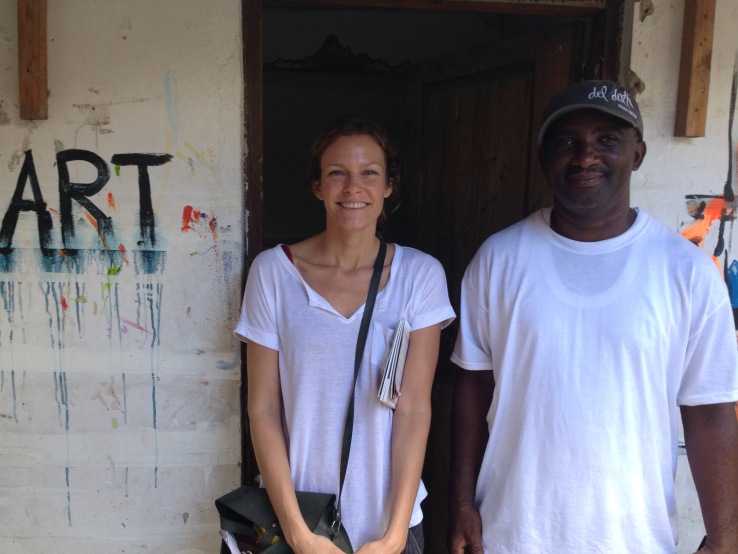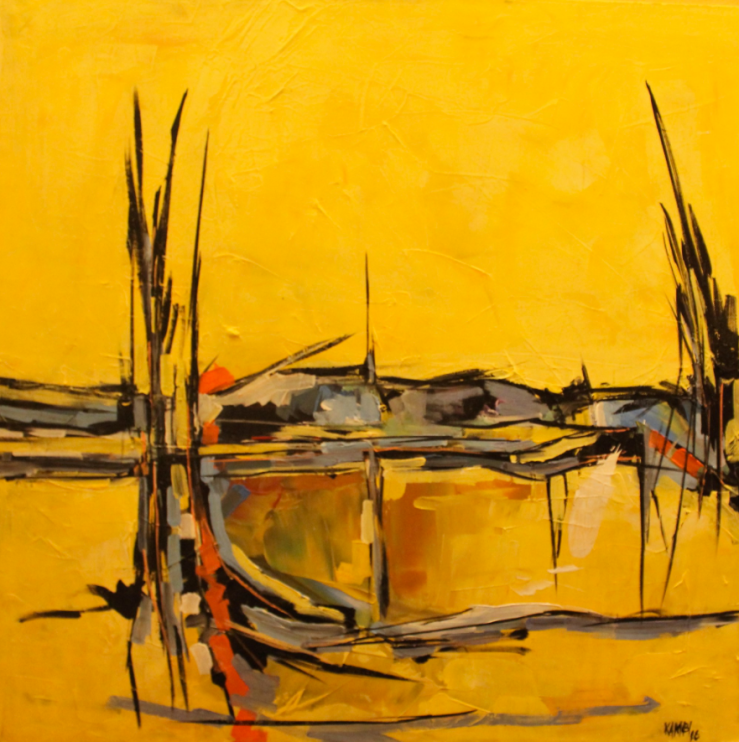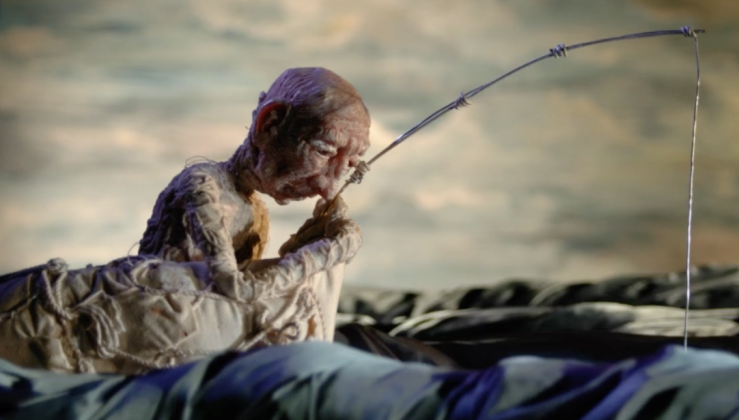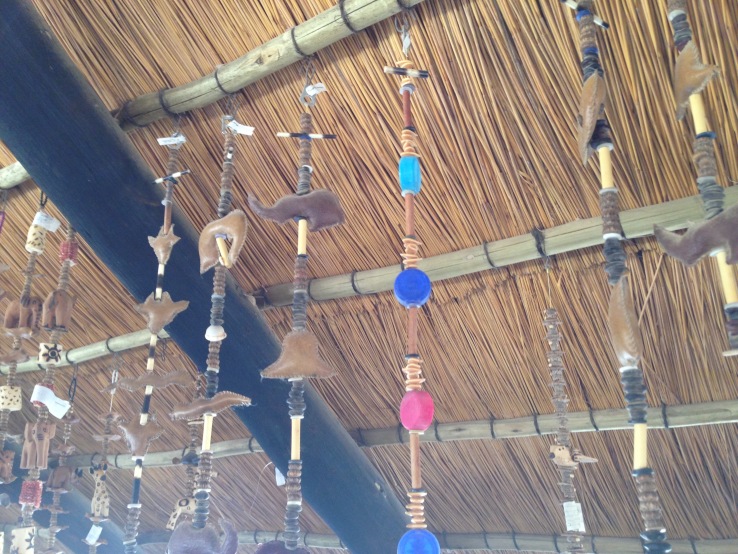
In Tanzania I have seen the plastic bottle cap be used for many things. I saw this approach again in Namibia captured in the photo above. Tourists probably would not buy the hanging decoration with the recycled bottle cap but it’s interesting that Namibians thought they might. In this sense, Namibians are treating the bottle cap as just another local material that has more than one utilitarian purpose. This suggests that for many East Africans, recycling comes naturally to them.
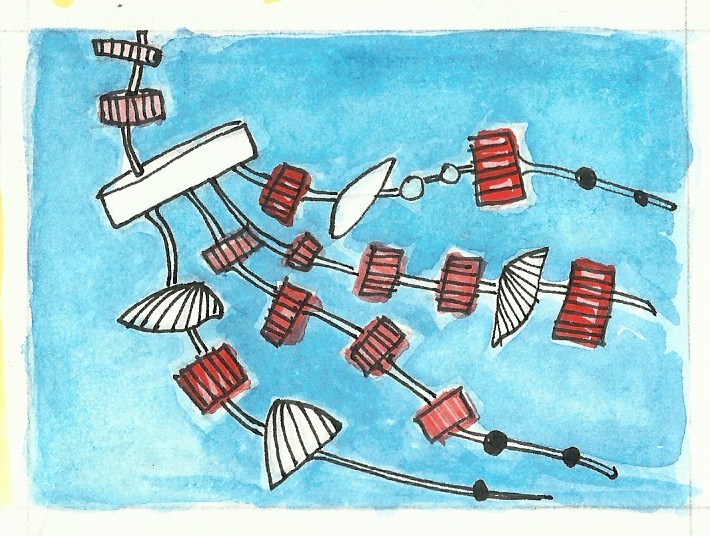
Above is a sketch from the original storyboard which I developed a bit more with ink and watercolour paint. I am hoping to create a chime like this for one of the scenes in the film. I can already imagine the movement and the sound of the wind and the items clinking together.
I don’t think I will use real plastic bottle caps to do this because this would mean creating quite a large object to animate. I would like to create miniature replicas of the bottle caps for this scene. This needs to be investigated and experimented with. I have been looking for beads that already resemble the shape which I could add details to with paint. I could also make them from scratch out of air-dry clay or polymer clay that gets baked. I should be thinking about continuity and how the bottle cap will look the same in each shot and also about their function as well. I may not need to use replicas in each shot, I may use a mix of the two depending on which shot it is and how I need to animate it.
Regardless, whenever I use the miniatures, their resemblance to the real object needs to be very clear. If the viewer does not identify the plastic bottle cap in the shot, the message of the film will lost.

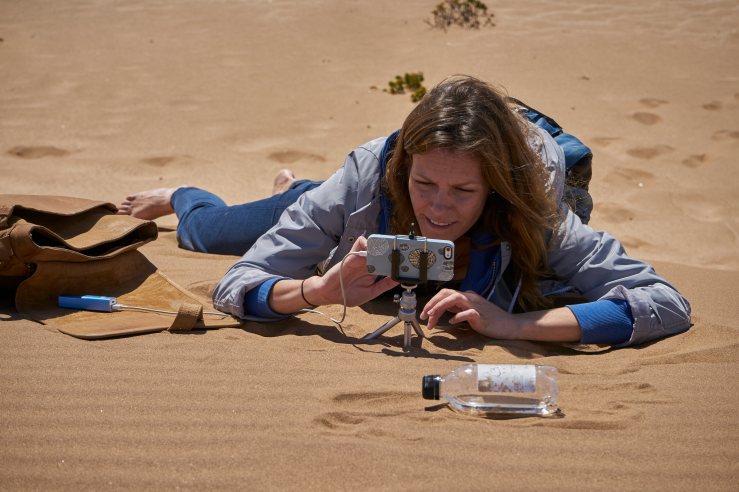 I have been looking all over for a small, compact water bottle that I can make a toy car out of without cutting away too much plastic. I finally found the one. You can see the desired proportions in the pictures above when I used it to create some very basic movements in a stop motion film.
I have been looking all over for a small, compact water bottle that I can make a toy car out of without cutting away too much plastic. I finally found the one. You can see the desired proportions in the pictures above when I used it to create some very basic movements in a stop motion film.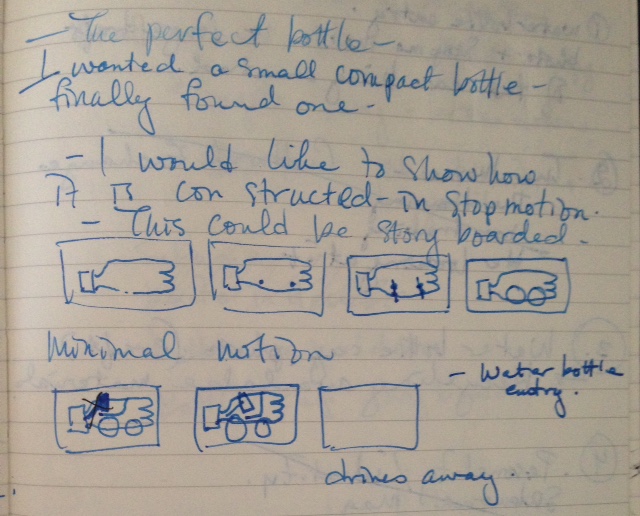
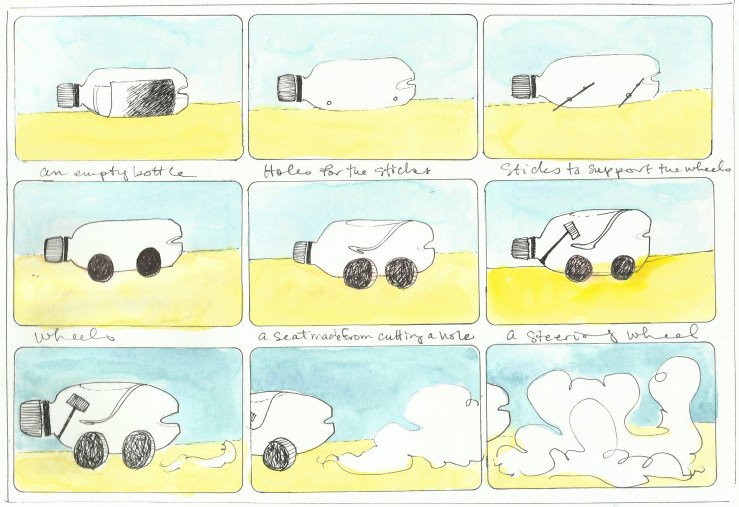 Above is
Above is 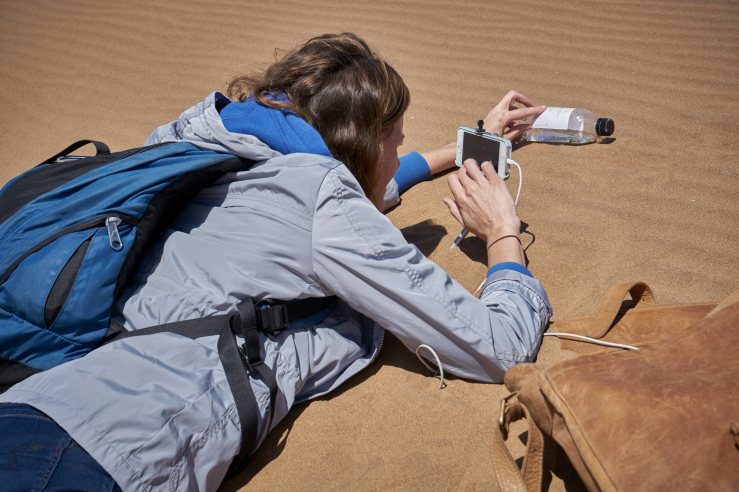 While in the Namib desert I experimented with simple movements. The aim of this film was to explore how a bottle cap could move from the top of a bottle and out of the screen.
While in the Namib desert I experimented with simple movements. The aim of this film was to explore how a bottle cap could move from the top of a bottle and out of the screen.